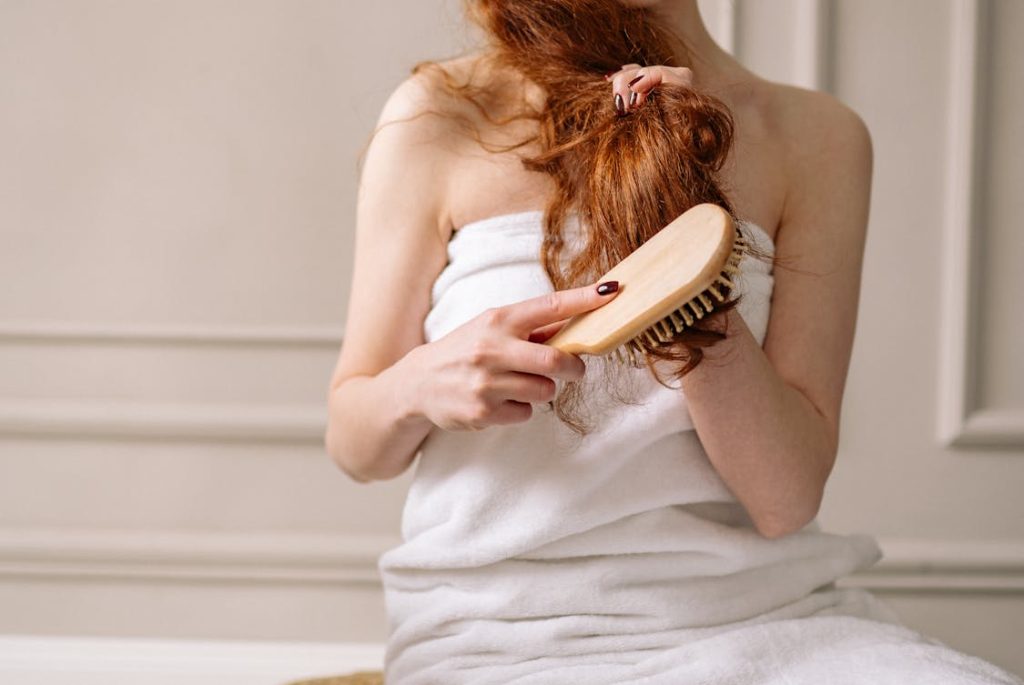Hair shedding is a common occurrence that many experience throughout their lives. It’s a part of the natural hair growth cycle, but that doesn’t mean we shouldn’t pay attention to it.
If you’ve ever found yourself frantically counting strands on your pillow or in the shower, you’re not alone. Let’s break down what hair shedding is, why it happens, and when to seek help.
What is Hair Shedding?
At its core, hair shedding refers to the process of losing hair strands, typically as a part of a normal cycle. Each hair follicle goes through a growth phase, a resting phase, and then a shedding phase.
This cycle varies for everyone and can be influenced by numerous factors. It’s important to remember that people shed between 50 to 100 hairs per day as part of this cycle, so noticing some hair loss is completely normal.
If you find yourself losing significantly more, it might be time to investigate further.
The Hair Growth Cycle
Understanding the hair growth cycle is essential for grasping why shedding occurs. Hair follicles alternate between three primary phases:
Anagen Phase: This is the growth phase, lasting several years. Hair grows continuously, and the length of this phase can determine how long your hair can grow.
Catagen Phase: Marking a transition, this phase lasts a few weeks. The hair follicle begins to shrink, and hair growth slows down during this period.
Telogen Phase: This is the resting phase where hair is dormant. After this period, the hair is shed, making way for new growth.
The cycle can vary greatly due to genetics, health, and various external factors.
Common Causes of Hair Shedding

Hair shedding can stem from numerous sources, some of which might surprise you. Here are a few common factors that may contribute:
Stress and Anxiety
Mental health plays a pivotal role in bodily functions, including hair health. High stress levels can lead to a condition known as telogen effluvium, where hair follicles enter the shedding phase prematurely.
Identifying stressors and finding ways to mitigate them can be beneficial for overall well-being.
Nutritional Deficiencies
A balanced diet is key to maintaining healthy hair. Deficiencies in essential nutrients—such as iron, zinc, and vitamins A and D—can lead to increased hair shedding.
Ensuring you consume a variety of foods can help prevent this issue.
Hormonal Changes
Hormonal fluctuations can have a significant impact on hair growth and shedding. Conditions like pregnancy, menopause, and thyroid disorders can lead to temporary hair loss.
If hormonal imbalances are suspected, consulting with a healthcare professional is a good idea.
Environmental Factors
Exposure to harsh environmental conditions—like extreme temperatures, pollution, and chlorinated water—can stress the hair and lead to shedding. Protecting your hair from these elements can help maintain its health.
Seasonal Shedding: Myth or Reality?
Many people notice more hair on their clothes or in their showers during specific seasons. The phenomenon of seasonal shedding has been a topic of discussion.
While scientific evidence is limited, some suggest that hair may shed more in the fall and winter months due to changes in temperature and light exposure. Pay attention to your hair’s behavior during different seasons; it could provide insight into your shedding patterns.
Hair Care Habits
Your hair care routine can also influence shedding. While it may seem straightforward, the products and techniques you use matter. Here are some common hair care habits to consider:
Brushing Techniques
Aggressive brushing can lead to hair breakage and increased shedding. Opt for gentle brushing techniques using wide-toothed combs and avoid pulling on tangles too forcefully.
Consider brushing your hair when it’s dry or slightly damp to minimize damage.
Shampooing and Conditioning
Over-washing can strip your hair of natural oils, leading to dryness and brittleness. Find a balance between cleanliness and maintaining moisture. Using sulfate-free shampoos and nourishing conditioners can be beneficial.
Heat Styling
Frequent use of heat styling tools can weaken hair strands over time. If you can, limit the use of blow dryers, curling irons, and straighteners. When styling, always apply a heat protectant to safeguard your hair from damage.
When to Seek Professional Help
Recognizing when hair shedding crosses the line into a more serious concern is vital.
If you notice excessive shedding that doesn’t improve over several months or experience other symptoms—like scalp irritation or increased bald spots—it’s wise to consult a dermatologist or trichologist. They can help identify underlying causes and recommend appropriate treatments.
Diagnostic Tests
In some cases, medical professionals may suggest tests to better understand your hair loss. Blood tests can reveal deficiencies or hormonal imbalances, while scalp biopsies can provide insights into follicle health.
Treatments for Hair Shedding
Once the causes of hair shedding are identified, various treatment options may be available. Here are some common approaches:
Topical Treatments
Minoxidil is a popular topical treatment used to promote hair growth. Applied directly to the scalp, it can help revitalize hair follicles and reduce shedding. It’s available over the counter and may take several months to show results.
Supplements
If nutritional deficiencies are identified, supplements can provide the necessary nutrients to support hair health. Biotin and iron supplements are commonly recommended, but always consult with a healthcare professional before starting any new regimen.
Lifestyle Changes
Adopting healthy lifestyle habits can significantly impact hair health. Regular exercise, proper hydration, and a balanced diet rich in vitamins and minerals can foster a healthier environment for hair growth.
Stress management techniques, such as yoga or meditation, can also contribute to improved hair health.

